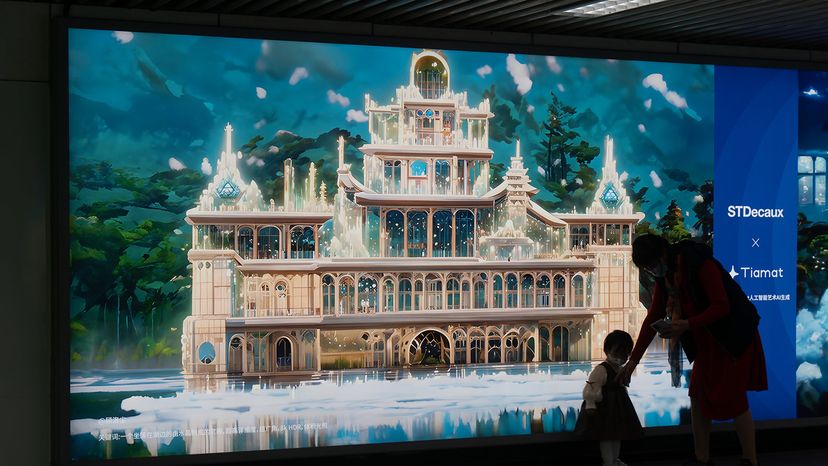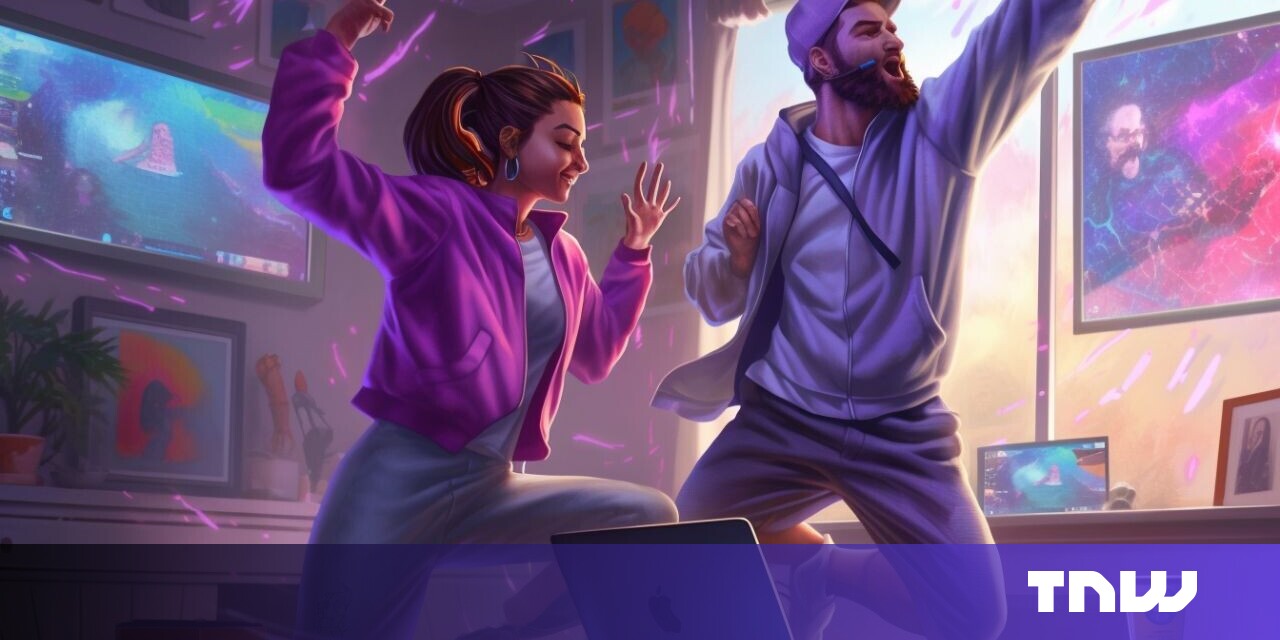
The advent of generative AI has shifted the target of automation from blue-collar to white-collar workers.
“In order to automate a knowledge-based job, you don’t need a robot or any expensive machinery,” says Ford. “All you need is software, an algorithm. That’s what ChatGPT in particular has really brought into focus.”
We’ve put together a list (in no particular order) of the eight jobs that AI experts predict will be the most vulnerable to AI automation and eight that are far harder to replace with supersmart machines ─ for now at least…
1. Content Marketers
There’s an entire industry dedicated to marketing products and services through web articles, videos and social media posts. Digital marketers write blog posts, produce videos and maintain social media channels for both large corporations and mom-and-pop shops. But that type of targeted content is exactly what generative AI is designed to create.
Ford puts it bluntly: “Content marketers are in trouble.”
There are already powerful applications like Jasper, an AI that pumps out snappy articles, personalized emails and timely Twitter posts with the push of a button. Even better (or worse), Jasper automates many of the other tasks that are part of a content marketing campaign, like A/B testing and search engine optimization.
Davenport says the people who should be the most worried are marketers who specialize in “low-quality content” that doesn’t require a lot of original thinking. “By definition, AI can only produce stuff that’s a variation of what’s already out there,” says Davenport. “If you want anything novel at all, you’ll still have to turn to a human.”
2. Beat Journalists
Certain types of journalism are already being replaced by AI. Sports reporting, in particular, lends itself easily to automation. An algorithm can look at a box score from a baseball or basketball game — which players scored and when, how the winning team took the lead — and churn out a 500-word article that tells a compelling and accurate story.
The same is true for some types of financial journalism, like quarterly announcements of earnings reports and other business data. Since 2014, The Associated Press has partnered with an AI platform called Automated Insights to publish thousands of earnings report articles a year without a single human journalist. The Associated Press said that doing this had allowed business reporters 20 percent more time that could be used to do deeper stories.
The same AI program automated The AP’s 2018 coverage of NCAA basketball. Automated news was also used for election results and updating statistics during the COVID-19 pandemic, as well as to do “explainer”-type pieces, though many AI-produced articles have been found to have errors.
“Anyone who has a job where they sit in front of a computer and do something fairly predictable again and again, even if that involves skilled writing, is going to be highly susceptible to automation,” says Ford.
3. Graphic Artists

If you think that all creative and artistic work is immune from automation, you haven’t met DALL-E 2 from OpenAI, the brains behind ChatGPT. DALL-E 2 generates images the same way that ChatGPT generates text. Type in a prompt — like “create a business card for a flower shop called Daisy Mae’s” — and DALL-E 2 will create dozens of different business card designs instantly. The results, according to one professional graphic designer, are “insane” (in a good/scary way).
Graphic designers can look at applications like DALL-E 2 in one of two ways: They can see it as an existential threat that’s going to render human designers obsolete; or they can use tools like DALL-E 2 to quickly generate visual ideas that can be perfected through human artistry.
Yes, generative AI is going to replace graphic artists who specialize in quick-and-dirty designs, but there will always be a market for higher-end work.
Just ask Jason Allen, a Colorado video game designer who won a “digitally manipulated photography” contest using an AI image generator called Midjourney. Allen didn’t just punch in a prompt; he spent 80 hours making more than 900 versions of his digital masterpiece. While the win generated a lot of online hate for “cheating,” Allen told The Washington Post, the AI “is a tool, just like the paintbrush is a tool. Without the person, there is no creative force.”
4. Data Analysts
In our digital world, companies and organizations are drowning in data: sales figures, demographic data, climate models, you name it. It’s the job of data analysts to sift through all that data, identify hidden trends and make actionable recommendations.
Not all of that work is glamorous. A big part of a data analyst’s job is selecting fields and filters, and figuring out the best spreadsheet formulas for slicing and dicing the data. The good (and bad) news is that AI can now do much of that time-consuming labor.
As with many other job sectors, there will continue to be a need for high-level analysis and decision making, says Davenport, “but lower-level data analysis — like financial modeling in investment banking and private equity — a lot of that could be taken over by AI.”
5. Programmers and Coders
Most experts agree that generative AI will be a boon for software developers. With AI tools like Copilot, programmers don’t have to painstakingly code line after line from scratch. Just type in a prompt and the algorithm can generate high-quality code in multiple coding languages.
According to a paper from Microsoft and MIT, software developers who used Copilot were able to write a program 56 percent faster than traditional coders. In the tech industry, where mass layoffs have already culled the workforce, coders are rightfully concerned that entry-level programming jobs will be replaced by AI.
For the software developers who keep their jobs, many will take on new roles as “prompt engineers,” people with a knack for entering the best prompts into the automated coding apps.
6. Lawyers
“AI will have a big impact in law,” says Ford. “AI and other types of legal software are already transforming the discovery process, figuring out which documents are relevant to a case.” AI is also handling a lot of contract generation and contract analysis.
Again, it’s the time-consuming, repetitive, low-level legal work that will be automated first, so there will be less of a need for entry-level lawyers, but critics argue that AI will never replace the majority of what lawyers do. It will simply allow lawyers, like other professionals, to spend more time on big-picture thinking and less on the grunt work. (However, a lawyer who uses ChatGPT should double-check the cases it cites, as one attorney found out the hard way.)
On the plus side, automated legal services could provide a critical resource for low-income Americans, 86 percent of whom could not afford legal representation in civil cases, according to the American Bar Association.
7. Warehouse Workers
Over the past decade, Amazon has deployed more than 500,000 robots in its “fulfillment centers,” the massive warehouses where Amazon orders are collected, boxed and shipped out. At the same time, Amazon has hired more than a million human warehouse workers, arguing that maximum efficiency will be realized by humans and machines working together.
Meanwhile, Amazon is investing in robots that can do the nimble work of humans — visually identifying and grabbing small objects from mixed bins — so how long will it be before companies like Amazon can fully replace imperfect human warehouse workers who need breaks and keep threatening to unionize?
“You’re going to see automation moving very rapidly in those controlled warehouse environments,” says Ford. “Within five years or so, there are going to be a lot fewer human employees within Amazon warehouses.”
8. Radiologists and Medical Diagnosticians
Way back in 2016, when ChatGPT was just a glimmer in its creators’ eyes, the Turing Prize-winning computer scientist Goeffrey Hinton declared, “We should stop training radiologists now.”
That’s because smart machines running algorithms were already getting really good at identifying pathologies in X-rays, MRI scans and other medical imaging. In 2019, AI radiologists outperformed human doctors in identifying cancer in medical images, catching 5 percent more cancers and reducing false positives by 11 percent.
Does that mean that all radiologists are going to be replaced by AI in the next 10 years? Not exactly, says Davenport
“I subscribe to the theory that with all of these jobs, including radiology, the only people who are going to lose their jobs are the people who refuse to work with AI,” says Davenport.






